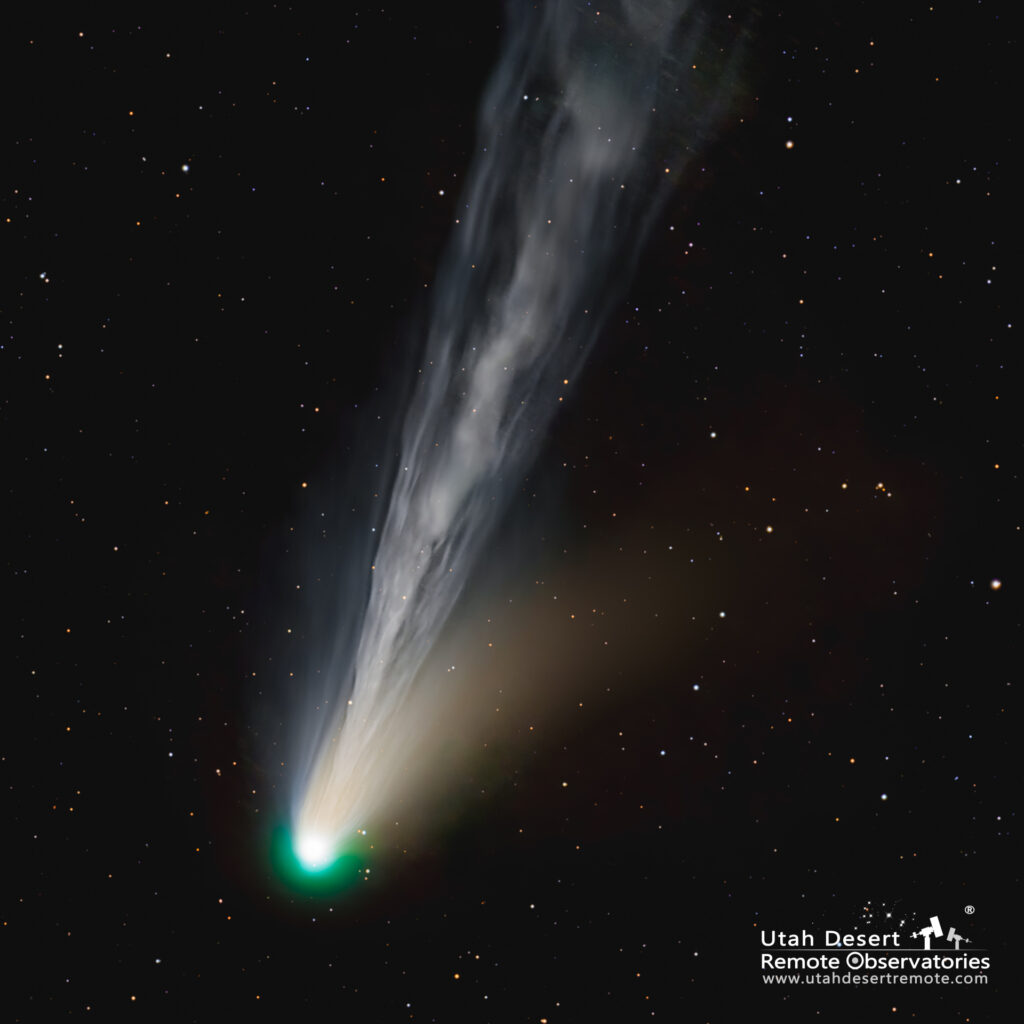By Jett Peters

We all love imaging nebulae and galaxies, but they are always there waiting for us to image and remain, for all intents and purposes, the same over time. There is something special about imaging an astronomical event that does not happen often, or will only happen once. Be it the eclipse, planetary conjunctions, or supernova events, these events always capture our attention. One of the most fascinating and most photogenic of these are comets. Everyone has either imaged or seen amazing images of comets. In 2023, the comet C/2022 E3 flew by earth and was one of the most photographed astronomical objects of the year. This was due in part to its beautiful green color.
Today I would like to draw your attention to another comet that holds great potential for astrophotographers and visual astronomers alike. This is the comet C/2023 A3 (Tsuchinshan–ATLAS). It was discovered on February 22, 2023 by ALTAS.
ALTAS stands for Asteroid Terrestrial-impact Last Alert System and is a warning system to detect near earth asteroids and comets. Its chief purpose is to give us early warning of an object on a collision course with Earth. The project consists of four 0.5-meter telescopes located around the world in order to give full-sky coverage.
C/2023 A3 will come quite close to earth at an estimated distance of 0.48 AU. 1 AU is the mean distance between the Earth and Sun. The date of closest approach is set to be October 12, 2024, so get ready! The comet may become visible to the naked eye (some estimates put it at a magnitude of negative three), though exact brightness predictions are uncertain.
More information on the comet and its exact position and distance can be found at this link.
Over the next few weeks we will go over how we photograph these special objects.
